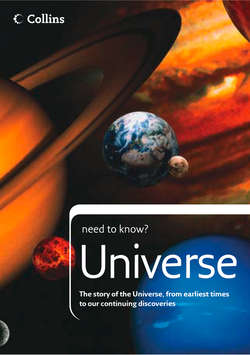Читать книгу Universe: The story of the Universe, from earliest times to our continuing discoveries - Peter Grego - Страница 58
Earth-centred Universe
ОглавлениеIn the 4th century BC, in accordance with Pythagoras’ deduction that the circle and the sphere were perfect figures, Eudoxus devised a complete picture of the Universe, placing our planet at the centre of a nest of 27 concentric transparent celestial spheres to which were attached the Sun, Moon, planets and stars. Each of these Earth-centred spheres rotated around an axis shared with the Earth’s axis. Using 55 spheres, the system was ‘improved’ by Aristotle a century later. It was considered that the Sun, Moon and planets were perfect spherical objects, and circular motions were deemed to be the only paths that could possibly be followed by celestial objects. This notion held sway throughout the entire era of ancient Greek astronomy and persisted through to the renaissance.
In the 3rd century BC, Eratosthenes applied trigonometry to determine that the Earth is a sphere measuring around 40,000km in circumference, a remarkably accurate feat achieved by observing the length of the shadow cast by the Sun at noon from two widely separated places (Aswan and Alexandria) whose separation was known.
A contemporary of Eratosthenes, Aristarchus used geometry to calculate the sizes and distances of the Moon and the Sun. By observing the Moon’s half-phases and the angles made by the Earth, Sun and Moon, Aristarchus concluded that the Sun was 19 times further away than the Moon (the Sun’s actual distance is 400 times that of the Moon). He observed the Moon passing through the Earth’s shadow during lunar eclipses and concluded that the Moon was half the Earth’s size.
Hipparchus, working in the 2nd century BC, made accurate measurements of the orbit, distance and size of the Moon, and determined the distance of the Sun. Using an accurately constructed naked eye measuring device called an astrolabe, he observed and recorded the co-ordinates of around 850 stars to compile a star catalogue. Another major star catalogue was compiled in the 2nd century AD by Ptolemy, who included it in an encyclopedia of ancient Babylonian and Greek knowledge.
must know
Very little is known of Ptolemy’s life. He made astronomical observations from Alexandria in Egypt during the years 127–41 AD. The first of Ptolemy’s observations can be dated to 26 March 127, while his last known observation was made on 2 February 141.
